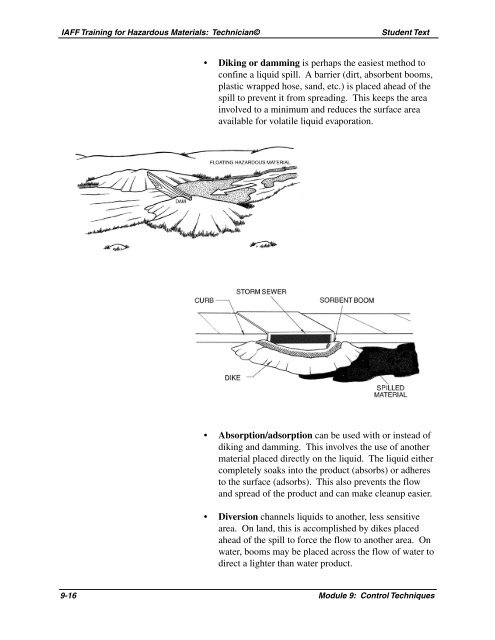Module 9: Control Techniques - International Association of Fire ...
Module 9: Control Techniques - International Association of Fire ...
Module 9: Control Techniques - International Association of Fire ...
You also want an ePaper? Increase the reach of your titles
YUMPU automatically turns print PDFs into web optimized ePapers that Google loves.
IAFF Training for Hazardous Materials: Technician©<br />
Student Text<br />
• Diking or damming is perhaps the easiest method to<br />
confine a liquid spill. A barrier (dirt, absorbent booms,<br />
plastic wrapped hose, sand, etc.) is placed ahead <strong>of</strong> the<br />
spill to prevent it from spreading. This keeps the area<br />
involved to a minimum and reduces the surface area<br />
available for volatile liquid evaporation.<br />
• Absorption/adsorption can be used with or instead <strong>of</strong><br />
diking and damming. This involves the use <strong>of</strong> another<br />
material placed directly on the liquid. The liquid either<br />
completely soaks into the product (absorbs) or adheres<br />
to the surface (adsorbs). This also prevents the flow<br />
and spread <strong>of</strong> the product and can make cleanup easier.<br />
• Diversion channels liquids to another, less sensitive<br />
area. On land, this is accomplished by dikes placed<br />
ahead <strong>of</strong> the spill to force the flow to another area. On<br />
water, booms may be placed across the flow <strong>of</strong> water to<br />
direct a lighter than water product.<br />
9-16 <strong>Module</strong> 9: <strong>Control</strong> <strong>Techniques</strong>
















